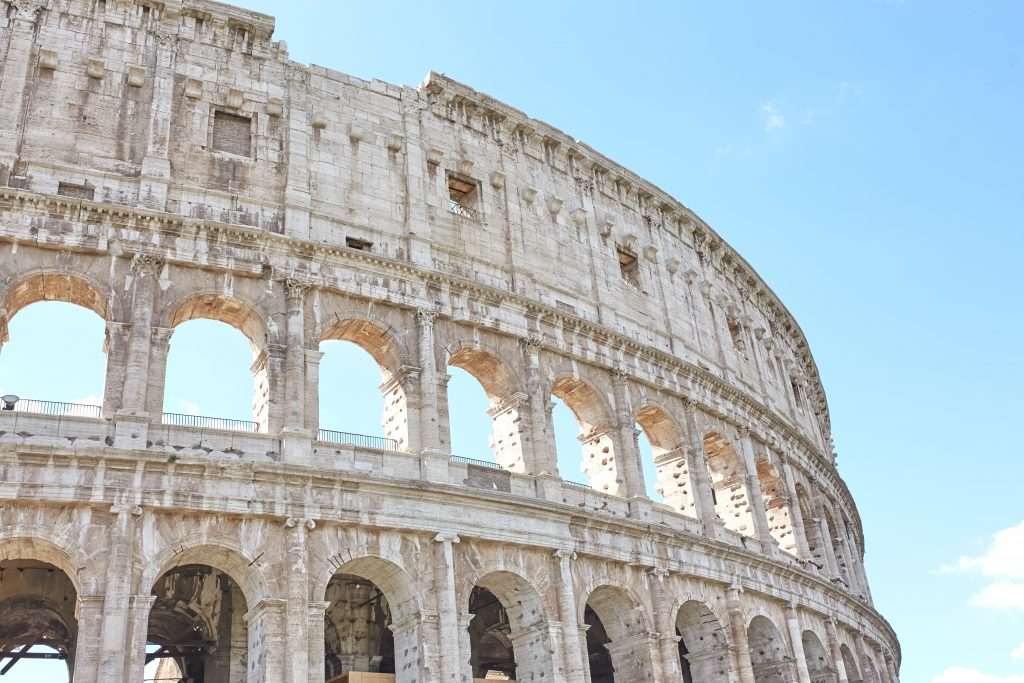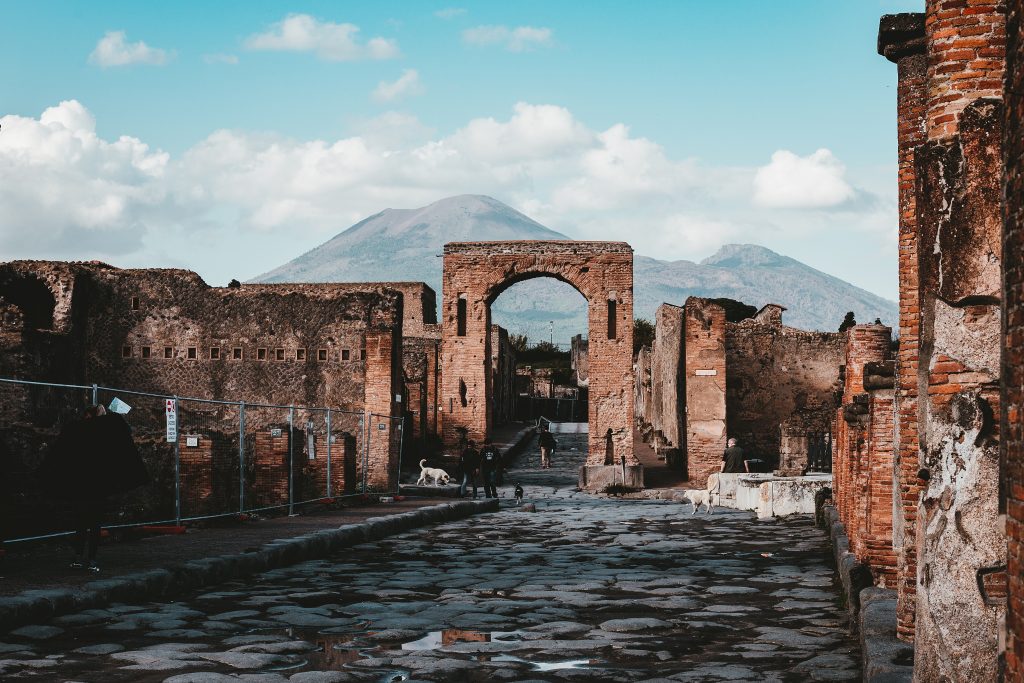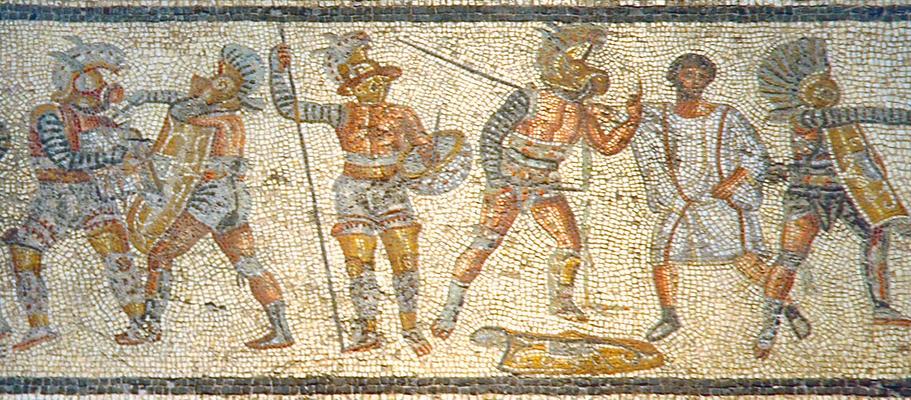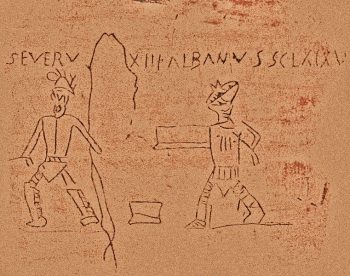Pompeii and Gladiators Posted by Brittany Britanniae on Jan 31, 2019 in Latin Language, Roman culture
Salvete Omnes!
This week we will be talking about the recent restoration and opening of a gladiator building in Pompeii.
A 2,000-year-old building where Roman gladiators in Pompeii trained for combat has opened to the public eight years after its collapse following rainfall. The Pompeii archaeological site said the public can tour the Schola Armaturarum on Thursdays. Experts will explain their painstaking restoration of frescoes that decorated the site where gladiators trained before combat in the ancient Roman city.
The word gladiator meaning “swordsman”, from the word gladius “sword” which is interesting because not all gladiators use a sword. The following are types of gladiators:
- Retiarius: they fought with a trident and net.
- Secutor: were armed with a sword and they carried a shield and wore a smooth helmet.
- Murmillo: was often called a fish man, wore a heavy helmet and fought with a sword and carried a shield.
- Hoplomachus: fought with a lance and a dagger and carried a small circular shield.
- Thraex: was dressed like a warrior from Thrace in northern Greece and were armed with a curved sword and carried a small shield.
- Samnite: was heavily armed with short sword and heavy shield.
- Provocator: were the only type of gladiator to wear a full breastplate and they also wore a helmet with a visor and was armed with a sword and shield.
- Eques: entered the arena mounted on a horse. They started their fights on horseback with lances, but finished on foot with a sword.
- Essedarius: rode into the arena on chariots pulled by horses and were armed with both a lance and a sword.
- Dimachaerius: Fighting with two daggers and little armor to weigh him down.
- Laquerarius: was just like a retiarius (see above), but instead of a net, they used a lasso to trap their opponent.
- Sagittarius: was armed with a bow and wore a lightweight pointed helmet.
- Andabatus: carried lances and wore helmets without eye holes and charged blindly at their opponents.

Most people’s knowledge of gladiators comes from the film “Gladiator.” So, there are some romanticized ideas about gladiators, but let’s clear up some of the definitions and terms.
Some gladiators were volunteers who were paid and called auctoratii. These “volunteers” were often from poor socioeconomic backgrounds. The hope may be to earn their freedom or even earn fame and renown in order to earn favor from the populus or “people.” The odds of having to survive several life-threatening combats were, of course, very small. Even if a gladiator was to earn his freedom, the stigma of an arenario (those who appeared in the area) made it difficult for gladiators after their life in the arena. Criminals condemned to the arena (called damnatii, while those who were considered a nuisance to society were called noxii) were branded so that even if they survived the combats, they would be noticed by the public.
However, gladiators were admired, loved, and a topic of much discussion. Here is an example of Roman Grafitti:
There are plenty of examples of gladiatorial fights recounted and reimagined. There is a wonderful site that includes pictures and translations of the Latin as well.
Have you ever been to Pompeii?
What would you be excited to see?

Build vocabulary, practice pronunciation, and more with Transparent Language Online. Available anytime, anywhere, on any device.







Comments:
George Panayiotou:
Could you please recommend to me a good book about Latin syntax that can be found in bookshops? Thank you very much.